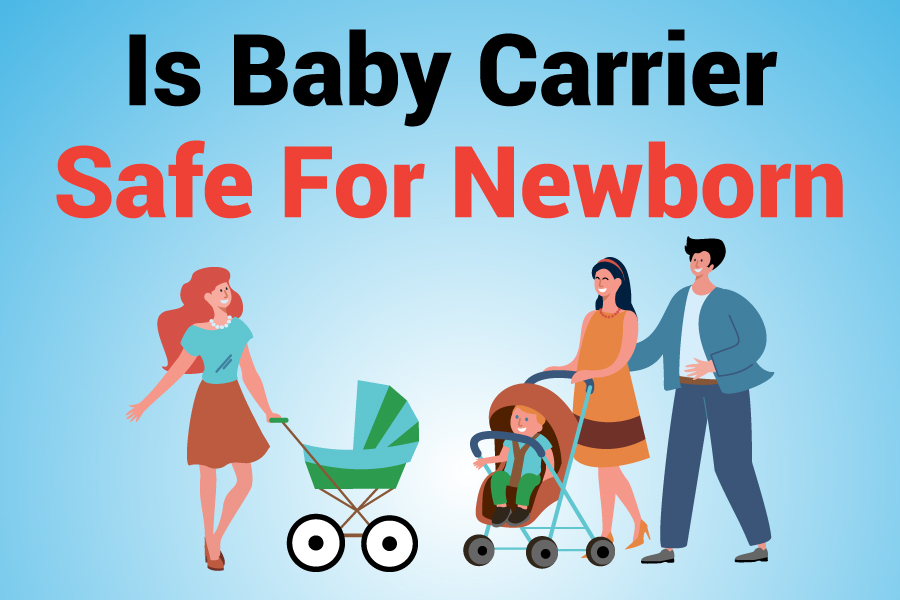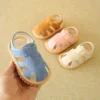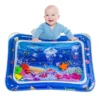Being a new parent, the responsibility that comes along is ensuring the safety of the newborn. The baby carrier is a real boom for many parents. They are very convenient and form a close connection between the baby and parents, but still one can ask, “Is a baby carrier safe for a newborn?” This is an appealing question because newborns are so fragile, and their correct care is vital. Knowing this can make you feel secure about the safety aspect of using a baby carrier for your newborn. This article further explores safety tips, advantages, and risks related to a baby carrier and is therefore an all-inclusive article that assures baby health. The information shared here will assure that whether you are a first-time parent or adding to your growing family, you can easily use a baby carrier safely.
Is Baby Carrier Safe For Newborn?
Yes, a baby carrier can be safe for a newborn if used correctly. Ensuring proper positioning, choosing the right type of carrier, and following safety guidelines are crucial. Always support the baby’s head and neck, make sure they can breathe easily, and check that their hips are in a healthy position. Consult your pediatrician for personalized advice.
Understanding Baby Carrier Safety For Newborns
Using a baby carrier can be a practical and comforting way to keep your newborn close while going about your daily activities. However, understanding the safety considerations is crucial. The first aspect to consider is the type of baby carrier. Different carriers, such as wraps, slings, and structured carriers, offer various levels of support and comfort. For newborns, carriers that provide ample head and neck support are essential.
Positioning is another critical factor in ensuring safety. The baby’s airway should remain clear at all times, which means their chin should not be pressed against their chest. Proper positioning also involves keeping the baby’s knees higher than their bottom, forming an “M” shape with their legs, which promotes healthy hip development.
It is also important to be aware of the carrier’s material and construction. The fabric should be breathable to prevent overheating and strong enough to support the baby’s weight without sagging. Additionally, all buckles, straps, and fastenings should be secure and easy to adjust.
Regularly checking the carrier for signs of wear and tear can prevent accidents. Any frayed seams, loose stitching, or damaged buckles should be repaired or the carrier should be replaced. Maintaining the carrier in good condition ensures ongoing safety for your newborn.
Lastly, education on proper usage is vital. Many manufacturers offer instructions and tutorials on how to use their carriers safely. Taking the time to learn and practice these techniques can make a significant difference in the safety and comfort of both you and your baby.
Key Safety Guidelines For Using A Baby Carrier For Newborns
- Choosing the Right Carrier: Selecting a carrier suitable for newborns is the first step. Look for carriers designed specifically for infants, offering adequate head and neck support.
- Proper Positioning: Always ensure your baby is in an upright position with their airway clear. The “M” shape position of their legs is crucial for hip health.
- Material and Construction: Opt for breathable, strong materials to prevent overheating and ensure durability. Regular checks for any damage are essential.
- Educate Yourself: Take advantage of tutorials and instructions provided by the manufacturer. Proper usage is key to ensuring safety.
- Regular Checks: Inspect the carrier regularly for any signs of wear and tear. Repair or replace the carrier if you find any damage.
Benefits And Considerations Of Baby Carriers For Newborns
Using a baby carrier offers numerous benefits for both the parent and the baby. These include convenience, bonding, and the baby’s comfort.
1. Benefits:
- Convenience: Allows parents to have their hands free while still keeping the baby close.
- Bonding: Promotes a closer bond through physical closeness.
- Comfort: Provides a snug, womb-like environment for the baby.
2. Considerations:
- Type of Carrier: Ensure it’s suitable for newborns.
- Positioning: Maintain correct positioning to avoid health issues.
- Material: Choose breathable and durable fabrics. Regularly inspect the carrier to ensure it remains in good condition, preventing potential safety hazards.
Exploring Alternative Perspectives On Baby Carrier Safety
While many parents and experts advocate for the use of baby carriers due to their numerous benefits, some concerns and alternative viewpoints should be considered. One concern is the potential for improper use, which can lead to respiratory issues or hip dysplasia if the baby is not positioned correctly. This underscores the importance of proper education and usage.
Another perspective is the varying needs of different babies. Some infants may not take well to carriers due to personal comfort preferences or medical conditions. Parents should always be attentive to their baby’s cues and consult healthcare providers when in doubt.
Additionally, cultural practices and traditional methods of carrying babies can differ significantly. In some cultures, babywearing techniques have been perfected over generations and are integral to childcare. These methods can offer valuable insights into safe and effective baby carrying.
Ensuring Long-Term Safety And Comfort In Baby Carriers
1. Long-term Health Considerations
Continuous use of baby carriers requires attention to the baby’s physical development. Ensuring proper support for the spine and hips is critical for long-term health.
2. Transitioning Between Carriers
As your baby grows, transitioning from newborn-specific carriers to those designed for older infants is necessary. This ensures continued support and comfort.
3. Seasonal Adjustments
Adapting the carrier usage based on the weather conditions is important. Breathable materials are essential in summer, while additional padding may be needed in winter.
4. Regular Monitoring
Keep an eye on your baby’s comfort and positioning during use. Regular adjustments can prevent discomfort and health issues.
5. Consultation with Experts
Regular check-ins with pediatricians can provide personalized advice and ensure your baby’s well-being while using a carrier.
Conclusion
Ensuring the safety of your newborn while using a baby carrier involves understanding and implementing proper techniques and guidelines. By choosing the right carrier, ensuring correct positioning, and regularly checking the carrier’s condition, you can provide a safe and comfortable environment for your baby. Continuous learning and consultation with healthcare providers will further ensure that your baby remains secure and healthy while enjoying the benefits of a baby carrier.
FAQ’s
Q: Can Newborns Use Any Type Of Baby Carrier?
A: Not all baby carriers are suitable for newborns. It’s essential to choose carriers that provide adequate head and neck support.
Q: How Can I Ensure My Baby Is Positioned Correctly In A Carrier?
A: Ensure your baby’s chin is not pressed against their chest and their legs are in an “M” shape for proper hip development.
Q: Are There Any Signs That My Baby Is Uncomfortable In The Carrier?
A: Signs of discomfort include fussiness, red marks from straps, or difficulty breathing. Adjust the carrier immediately if these signs appear.
Q: How Often Should I Check The Condition Of My Baby Carrier?
A: Regularly inspect your carrier before each use for any signs of wear and tear. Repair or replace damaged parts promptly.
Q: Can I Use A Baby Carrier During All Seasons?
A: Yes, but choose breathable materials for summer and add extra padding for winter to ensure your baby’s comfort in varying weather conditions.







